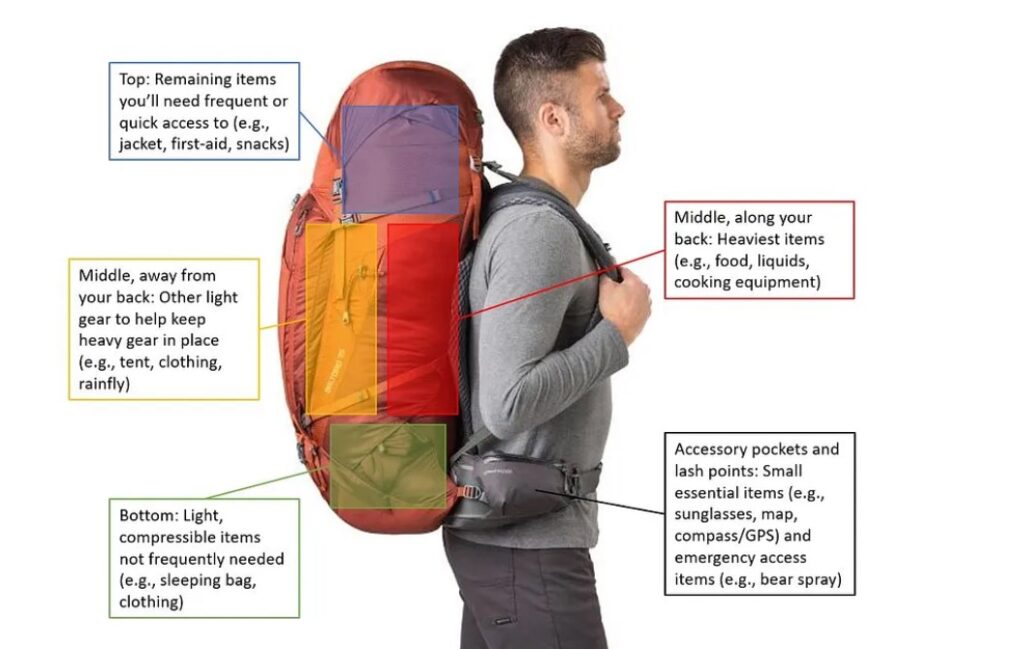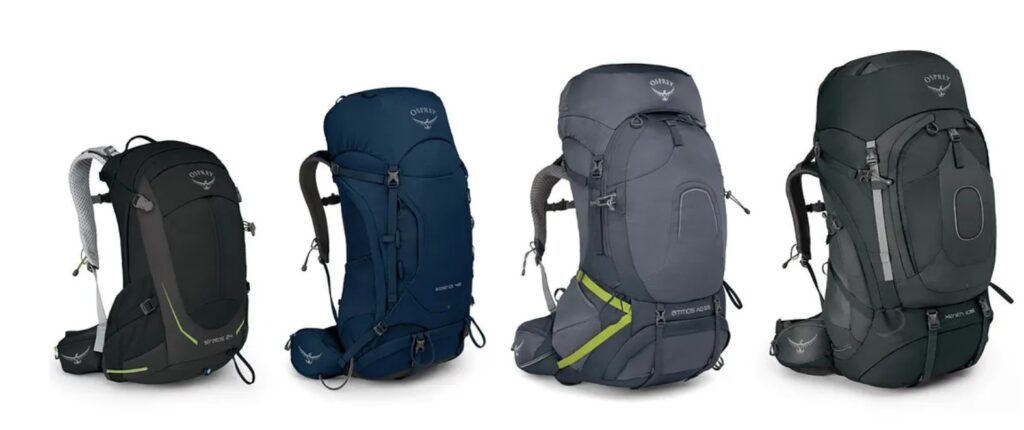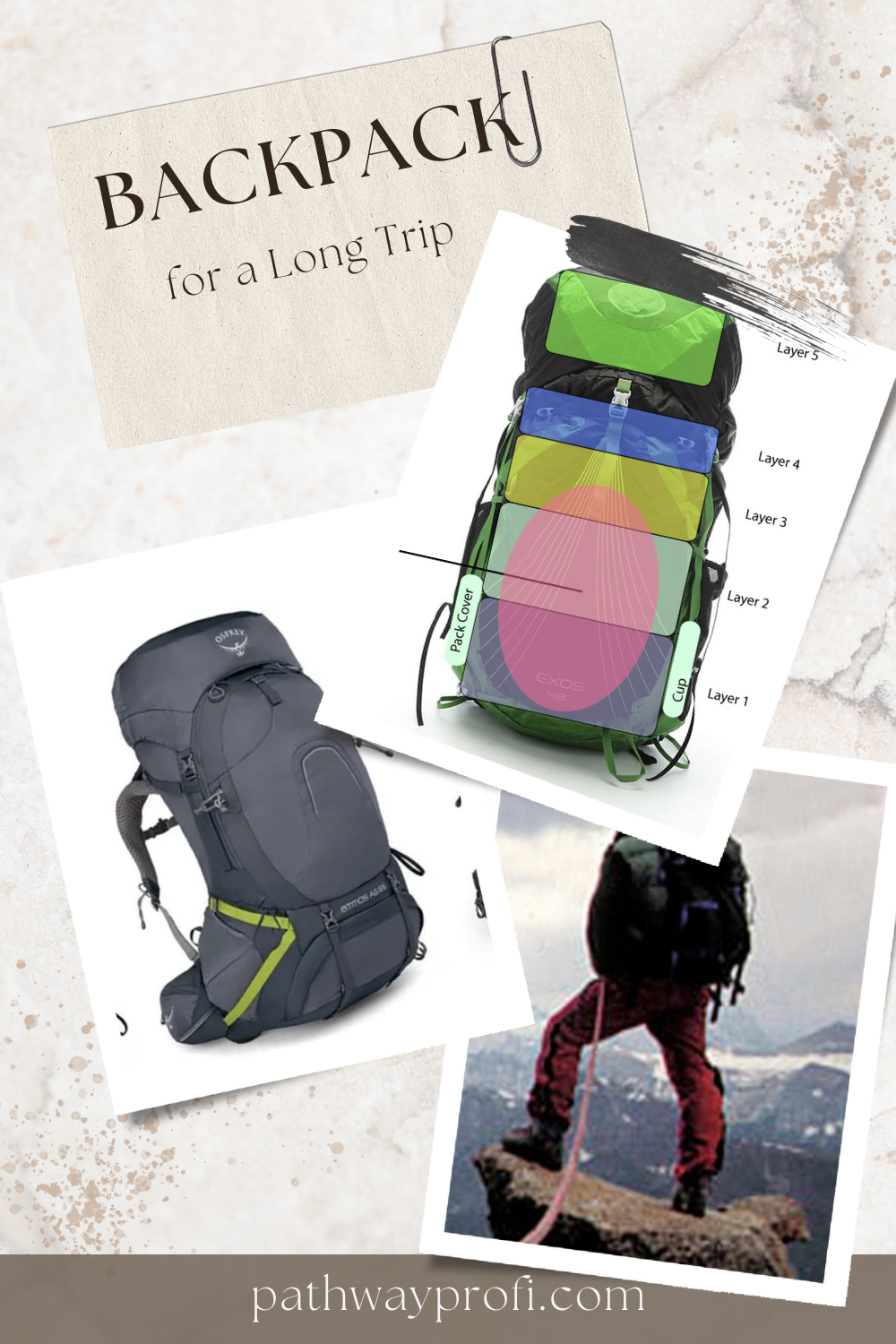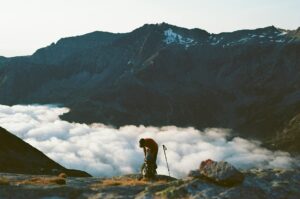Packing a backpack efficiently and correctly is crucial for a comfortable and hassle-free trip. A poorly packed backpack can lead to discomfort, back pain, and difficulty finding essential items.
In this guide, you’ll learn the best techniques for packing your backpack, how to distribute weight properly, and practical tips to maximize space and convenience.

Table of Contents
1. Choosing the Right Backpack for a Long Trip
Before you start packing, select a backpack that suits your journey:
✔️ 30–50 liters – for short trips (up to 5 days).
✔️ 50–70 liters – for extended travel and hiking trips.
✔️ 70+ liters – for expeditions and heavy loads.
🔹 Key backpack features to look for:
✅ Ergonomic back support – reduces strain on your spine.
✅ Adjustable straps – for even weight distribution.
✅ Multiple compartments – to organize items efficiently.

2. The Best Backpack Packing Strategy
To ensure comfort and stability, distribute the weight properly using the three-zone packing method:
🔵 Bottom Zone (Light & Bulky Items)
Store soft, bulky, and lightweight items at the bottom, as they won’t be needed frequently:
✔️ Sleeping bag
✔️ Extra clothing
✔️ Lightweight jacket
✔️ Inflatable pillow
🔹 Pro Tip: Use compression bags to reduce volume and keep items dry.
🔴 Middle Zone (Heavy Items, Close to Your Back)
This is the core area where the heaviest items should be packed closest to your spine for better balance.
✔️ Food and water supply
✔️ Cooking gear (stove, pot)
✔️ Electronics (camera, power bank)
✔️ Warm clothing (if not needed immediately)
🔹 Pro Tip: Packing heavy items close to your back improves stability and prevents strain.
🟢 Top Zone (Light & Frequently Used Items)
Pack items you need quick access to in the upper section of the backpack:
✔️ Rain jacket
✔️ Map or guidebook
✔️ Flashlight or headlamp
✔️ First aid kit
✔️ Snacks (nuts, protein bars)
🔹 Pro Tip: If your backpack has a lid pocket, use it for documents, keys, and valuables.
🟡 Side Pockets & External Attachments
Side pockets are great for small essentials, while external straps help carry large gear.
✔️ Water bottle
✔️ Knife or multitool
✔️ Trekking poles
✔️ Sleeping mat (strapped outside)
🔹 Pro Tip: Use bungee cords or straps to secure bulky items like mats and poles.
3. Smart Packing Hacks for More Space
✅ Roll your clothes – saves space and prevents wrinkles.
✅ Use packing cubes – keeps things organized and easy to find.
✅ Waterproof dry bags – protect gear from rain and keep items sorted.
✅ Store valuables in a waterproof pouch – for passports, money, and electronics.
✅ Leave some space – in case you need to add souvenirs or extra supplies.
4. How to Wear a Backpack Properly
✔️ Tighten the hip belt – 70% of the weight should rest on your hips, not shoulders.
✔️ Adjust the shoulder straps – the backpack should sit close to your back.
✔️ Don’t overload one side – balance the weight evenly to avoid back pain.
✔️ Take breaks – remove your backpack every 1-2 hours to relax your muscles.
Final Thoughts
Packing your backpack strategically can make your trip more comfortable and efficient. By following the three-zone packing system and using space-saving techniques, you’ll ensure that everything is well-organized and easy to carry.
📌 What are your favorite backpacking tips? Share them in the comments!





